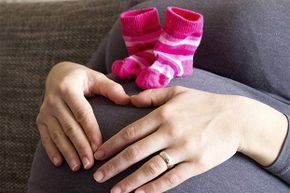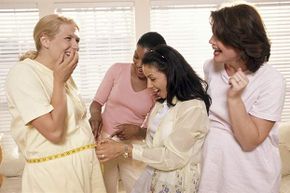Key Takeaways
- Pregnancy superstitions and old wives' tales add fun and color to the experience, but most lack scientific proof.
- Examples include the Ring Test for gender prediction, Full Moon Phenomenon for birth timing and Conception Position for baby gender.
- Other myths involve foods causing labor, avoiding funerals, nausea predicting gender, and birthmarks related to diet.
Ah, pregnancy. It's such a glorious, if uncomfortable and often un-private time. From the moment a woman gets pregnant, everyone is asking her personal questions: "What will you have? How big? When? Will you require a cesarean section? What will you name him or her? Breast or bottle?" For every question asked, there's generally an opinion to follow because nothing brings out theories and outright assertions quite like pregnancy. Although some of the advice and sentiments are unsolicited and annoying (Don't like the baby name I picked out? Good thing it's not your child!), old wives' tales do add a lot of color and fun to any pregnancy.
Sometimes, they do turn out to be right. For instance, if you ever had heartburn while expecting, chances are good that someone proclaimed that your child would enter the world with a full head of hair. To the genuine surprise of researchers, there does appear to be a significant link between the two -- pregnancy hormones affect both heartburn and fetal hair growth [source: Costigan et al.]. Nevertheless, most women are going to suffer through at least some level of heartburn, regardless of whether their kid comes out as bald as Charlie Brown or not.
Advertisement
Despite that confirmation, most other pregnancy prognostications don't have any proof to back them up. Here are 10 you should take with a grain of salt.










